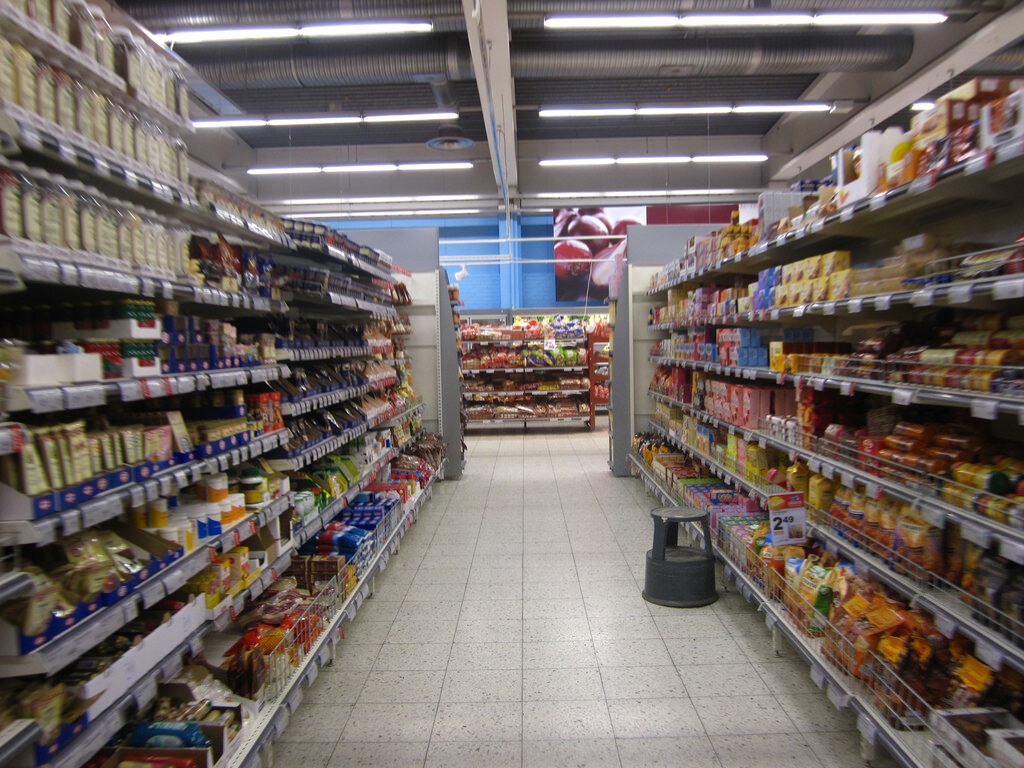FTC Allows Grocery Chains to Further Consolidate Power, Harming Farmers, Workers, and Consumers
Farmers, workers, and consumers alike may soon feel the effects of further consolidation in the already concentrated industry of grocery retail. On July 22, the Federal Trade Commission approved the latest in a long series of supermarket mergers, further concentrating control over U.S. food markets in the hands of a few giant corporations. Advocates say the deal will harm the interests of anyone who eats, grows, or sells food in an already highly concentrated food system.
The $29 billion merger between Netherlands-based retailer Ahold and the Belgian retailer Delhaize will create the fourth-largest retailer in the U.S., behind Walmart, Kroger, and Albertson’s. The combined company will operate 2,000 stores under the brand names Giant, Stop & Shop, Hannaford, Food Lion, and more.
“There’s been creeping consolidation in grocery retail,” says Diana Moss, president of the American Antitrust Institute. “We’ve had significant diminishment of competition. And this is more of the same.”
As a condition of the approval, the FTC did require the companies to divest 81 stores in markets where their retailers compete. But Moss says this mild remedy will likely have little to no effect.
The FTC ordered a similar divestiture last year in the $9.4 billion mergerbetween Safeway and Albertson’s. As part of the deal, Albertson’s agreed to sell 168 stores to Haggen Holdings LLC. But the company soon went bankrupt, and Albertson’s simply bought the stores back. It was a “disaster,” Moss says.
Consolidation has entirely remade the grocery business in the United States over the last 20 years. Before the retail merger wave of the 1990s—during which time there were 385 mergers in the grocery sector—only about 17% of consumers shopped for groceries at one of the top four retailers. By 2014, before the last two major mergers, that number had reached nearly 60%. On a regional level, the power of the biggest retailers is even greater. In 2011, Walmart accounted for half of all grocery sales in 35 cities.
Consolidation in the retail sector results in much more than higher prices for consumers. Bigger retailers tend to enjoy greater “buyer power” which gives them the ability to drive down the earnings of everyone in the supply chain, from the farmer to the field worker to the store employee. Walmart, which boasts a 25% share of national grocery spending, can leverage its market share to demand lower prices from suppliers and producers. To maintain a foothold in price negotiations, suppliers and producers often then also consolidate.
Workers at each end of the supply chain are squeezed by the downward price pressure created by retailer consolidation. Food Chain Workers Alliance co-director Jose Oliva says that when stores are small, there tends to be more flexibility in negotiating wages for workers. But increasingly, many farmworkers grow crops for specific stores. So when those stores consolidate, he says, workers end up with less power to demand higher wages.
Retail mergers can also affect unionization efforts for grocery store workers. Unions exist at several Ahold stores, Oliva says, mostly in Maryland and on the West Coast. If stores change hands, or if the merged company uses its new power to break those contracts, those workers could lose their benefits or even their jobs.
Retail consolidation is one of the main factors that has driven down what farmers earn each year. In 1990, ranchers received around 60 cents for each dollar spent on beef, and retailers received 33 cents. By 2009, ranchers received 42 cents to retailers’ 49 cents. According to estimatesfrom the Department of Agriculture, the farmer’s share of the “food dollar” today can be as low as 16 cents.
For consumers, the consequences of retailer consolidation can be intense. According to analysis by Food & Water Watch, food retailers exert a unique type of monopoly power, since consumers are restricted by travel and time in seeking out competitors. That analysis found that in cities with highly concentrated retail sectors, grocery prices could be as much as six times higher than in cities with only moderate concentration.
Stacy Mitchell, co-director of the Institute for Local Self-Reliance, points out that retailer consolidation also isn’t compatible with consumers’ growing interest in eating sustainable food. “There’s no way for a large chain to actually buy and distribute locally grown food,” she says.
“If we do want to have a food system that is much more locally-oriented, we need the retail part of that food chain to also be locally-oriented.”
What We're Reading
Publix has committed to exclusively sourcing cage-free eggs by 2026. A Change.org petition encouraging the Florida-based chain to go cage-free amassed over 110,000 signatures. Several other grocers have committed to cage-free eggs, including Walmart, Kroger, and Safeway.
On July 29th, President Obama signed a national GMO labeling bill into law. The law, highly contested in the food policy community, gives the Department of Agriculture two years to write rules on how nation-wide GMO labeling will be implemented.
The Department of Agriculture this week relaxed its restrictions on importing beef from Brazil. The restrictions had been put in place after foot-and-mouth disease was found in Brazilian cows. U.S. ranchers are currently contending with the lowest cattle prices in five years.
The last independent milk bottler in New York City, Elmhurst Dairy in Jamaica, Queens, is closing. The owner says rising costs and declining milk consumption meant the plant was no longer profitable. The shut-down could mean higher milk prices for consumers.
To subscribe to the Food & Power newsletter, click here.

